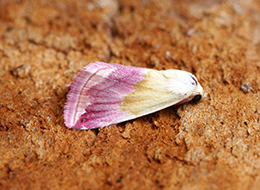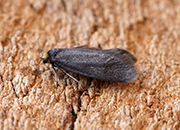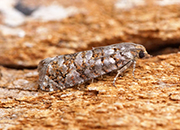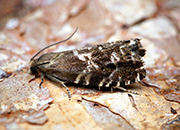Latest news on the UK BAP Priority Species found recently.
Dingy Mocha Cyclophora pendularia
One was in a garden trap in Dorset on 1st August.
Chalk Carpet Scotopteryx bipunctaria
Ten were seen at a known site in Cambridgeshire on 8th August. On the same date, at least 12 were seen at what may be a new site in East Sussex. Elsewhere in East Sussex, singles were seen at known sites on 1st and 9th August. In Kent, 27 were at a known site on 4th August, 3 at another known site on 3rd and singles at two further known sites on the same date. In Surrey, 15 were at a known site on 3rd, with one at another known site on the same date. In Dorset, one was at a known site on 23rd July, with 4 and 5 at two other known sites on 30th.
Barberry Carpet Pareulype berberata
One came to light at a known site in Gloucestershire on 30th July.
Argent & Sable Rheumaptera hastata
One third and one fourth instar larvae were seen at a known site in Wiltshire on 26th July.
Drab Looper Minoa murinata
A second brood individual was seen at a known site in Hampshire on 2nd August.
Straw Belle Aspitates gilvaria
One was at a known site in Kent on 3rd August, with 2 at another known site in the county on the following day. Eleven were seen at a known site in Surrey on 3rd. It seems that the drought conditions may be causing over-grazing at some Straw Belle sites this year.
Striped Lychnis Shargacucullia lychnitis
A search of 5 known sites in Hampshire on 2nd August produced just 2 larvae at one site and 4 at another. One larva was found at a new site in West Sussex on 7th.
White-spotted Pinion Cosmia diffinis
Singles were seen at two new and one known sites in Cambridgeshire on 26th July. Additional new sites in Cambridgeshire were discovered on 27th and 28th July and two more during the first week of August. Two new sites were also found in Huntingdonshire during the first week of August.
Fenn’s Wainscot Chortodes brevellinea
One was seen at a known site in Norfolk on 20th July, with 2 there on the following night.
Marsh Mallow Moth Hydraecia osseola
An exceptionally early individual was seen by two observers who are familiar with the species at a known site in East Sussex on 23rd July.
Light Crimson Underwing Catocala promissa
Singles were caught in a Hampshire garden on 21st and 26th July. Singles were also trapped at a known site in Wiltshire on 26th July and 3rd August.
Dark Crimson Underwing Catocala sponsa
Two were found at a new site in Wiltshire on 27th July.
Four-spotted Tyta luctuosa
Three were seen on the regular Peterborough transect on 2nd August – a good total for the second generation at this site.

 Musotima nitidalis
Musotima nitidalis L-album Wainscot
L-album Wainscot Feathered Ranunculus
Feathered Ranunculus Agonopterix nervosa
Agonopterix nervosa Blossom Underwing
Blossom Underwing Beautiful Marbled
Beautiful Marbled Lampronia fuscatella
Lampronia fuscatella Gravitarmata margarotana
Gravitarmata margarotana Perittia obscurepunctella
Perittia obscurepunctella Black-spotted Chestnut
Black-spotted Chestnut Cydia pactolana
Cydia pactolana










.JPG)




































